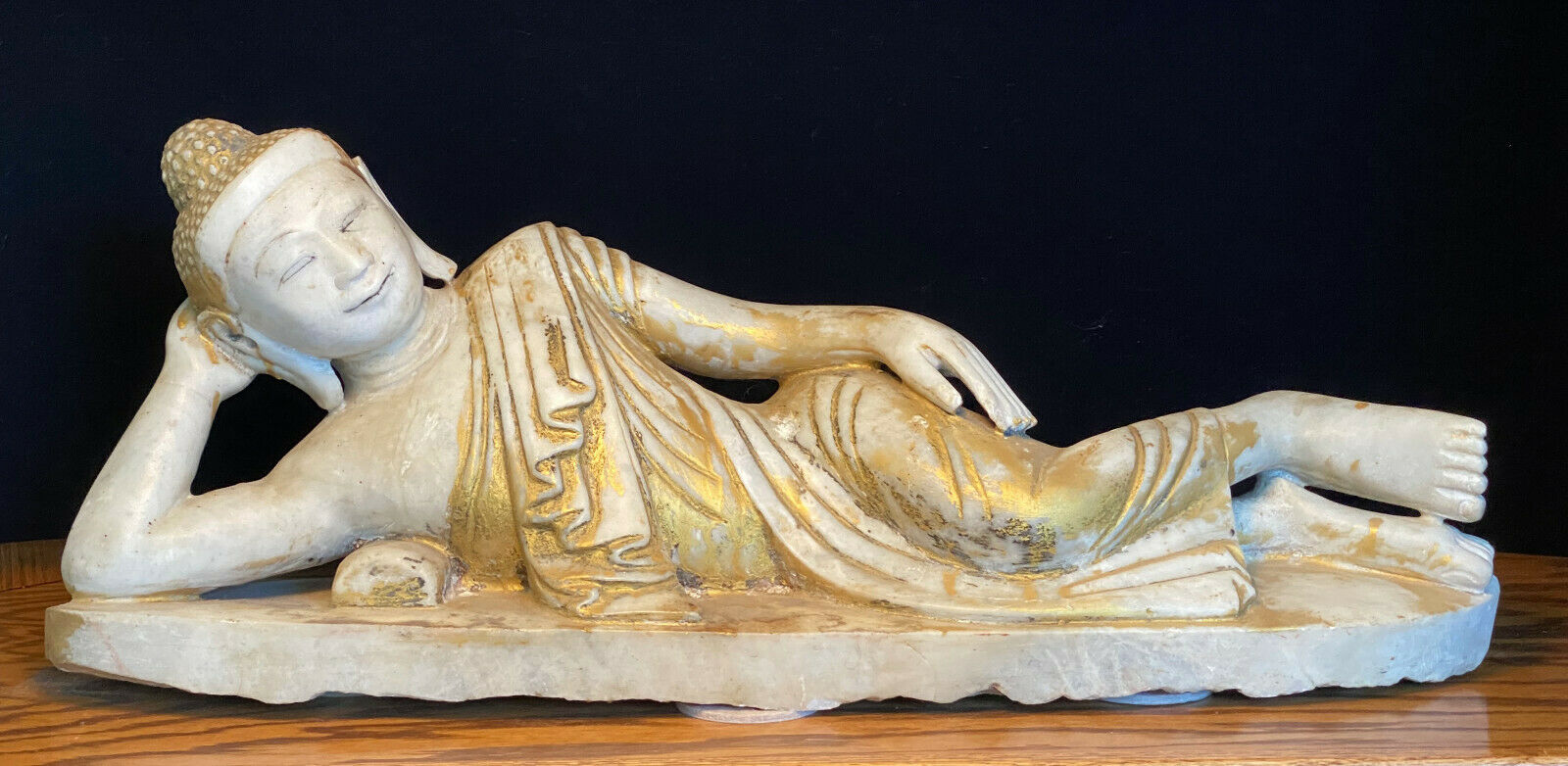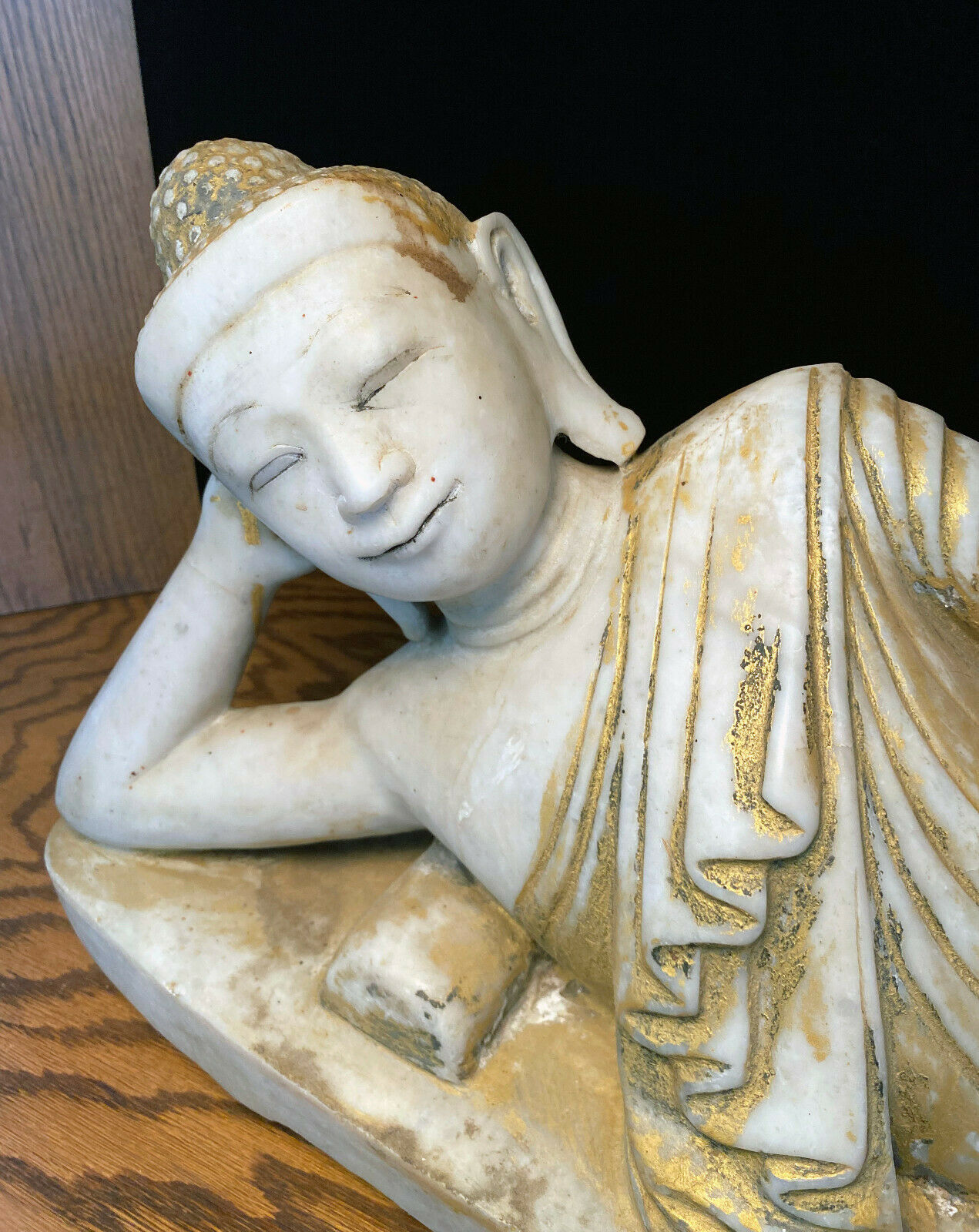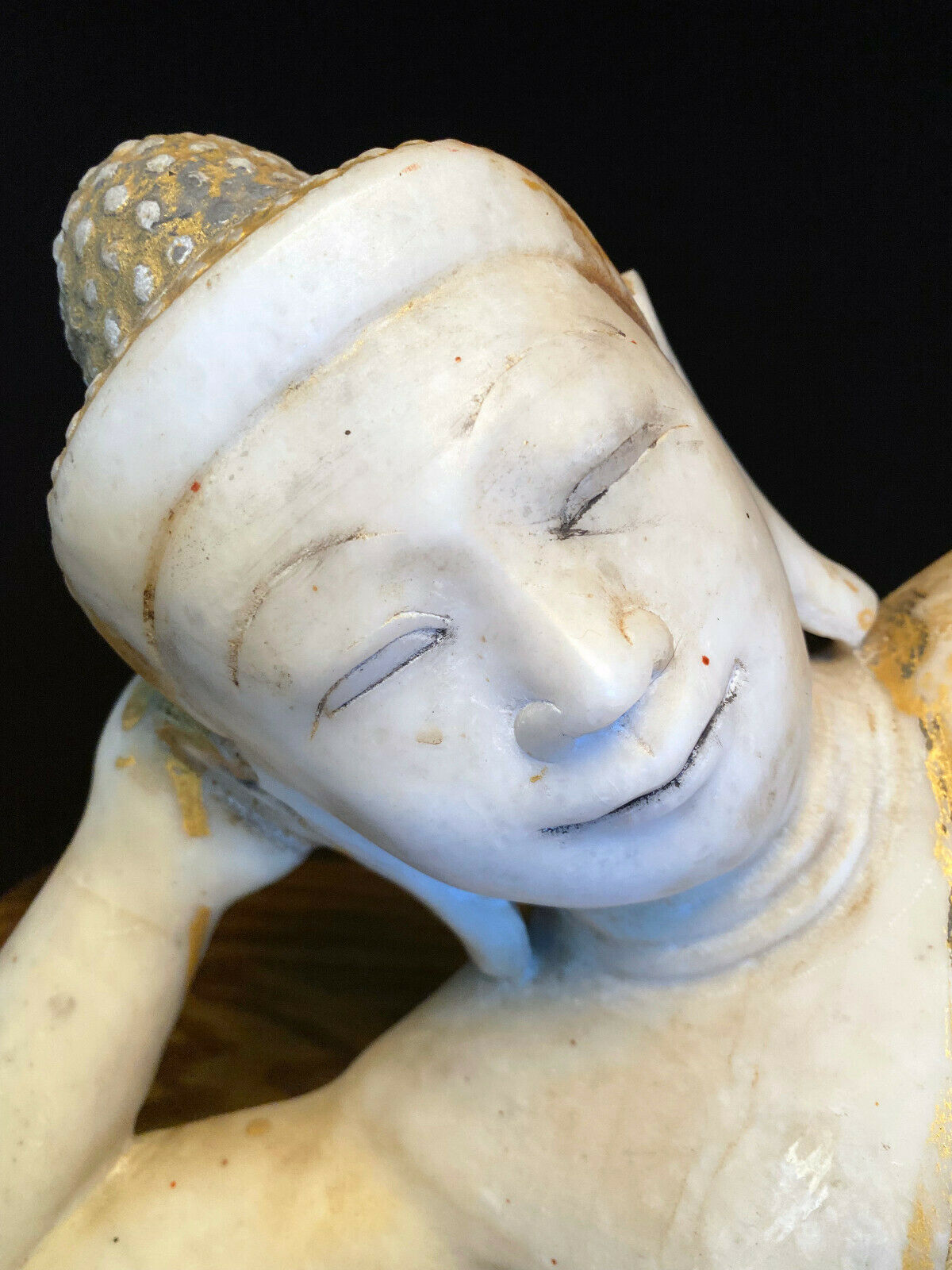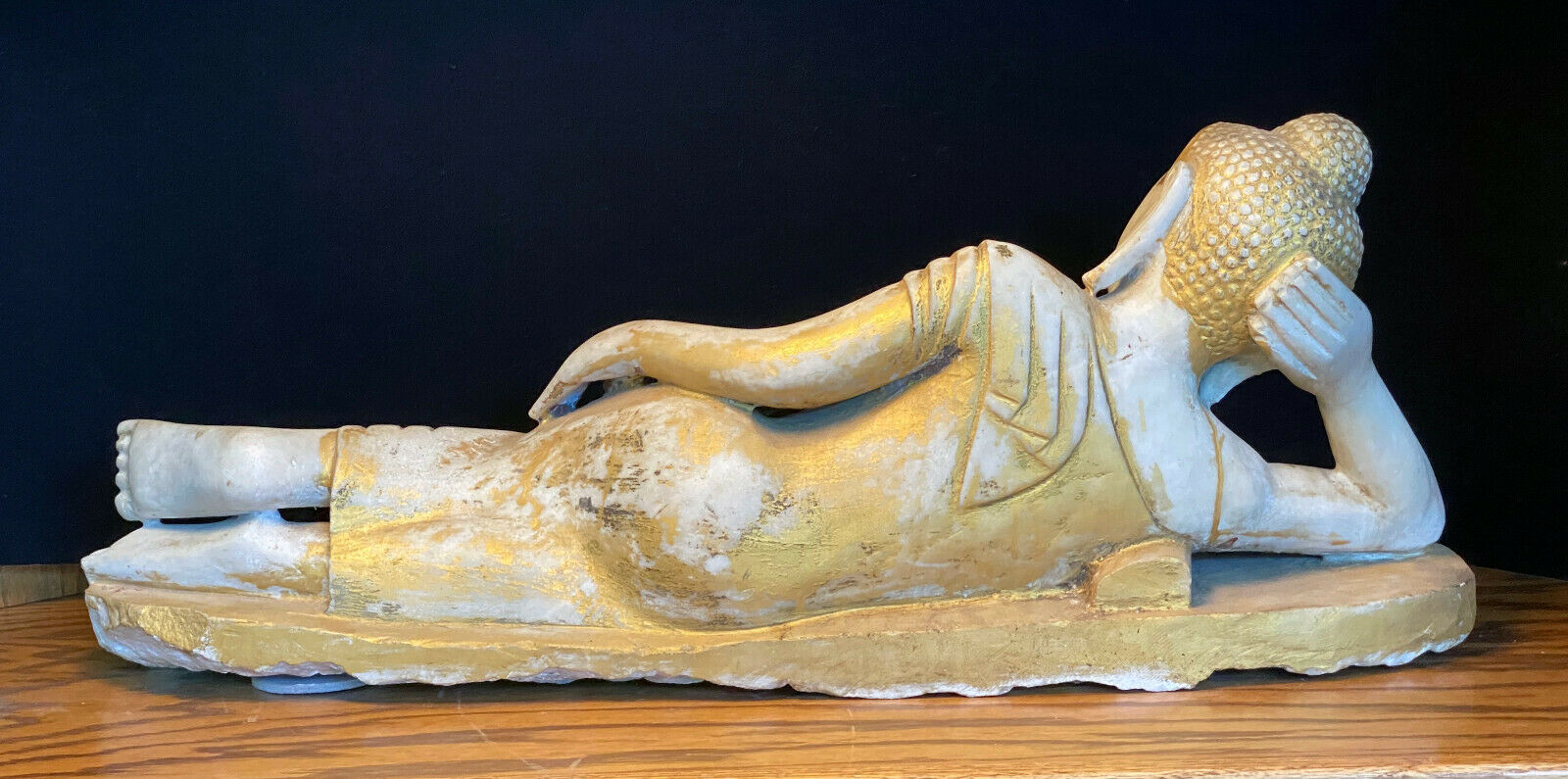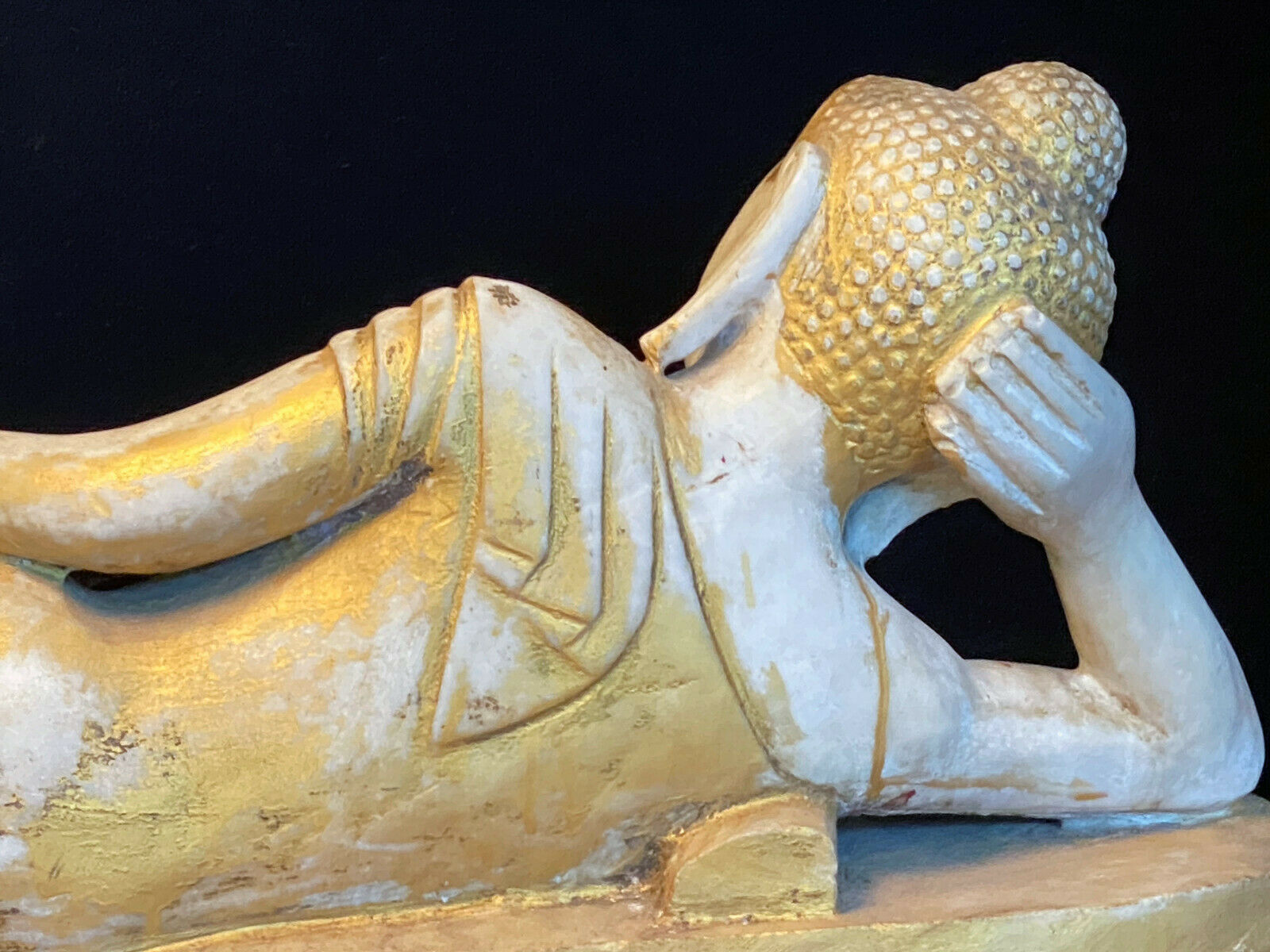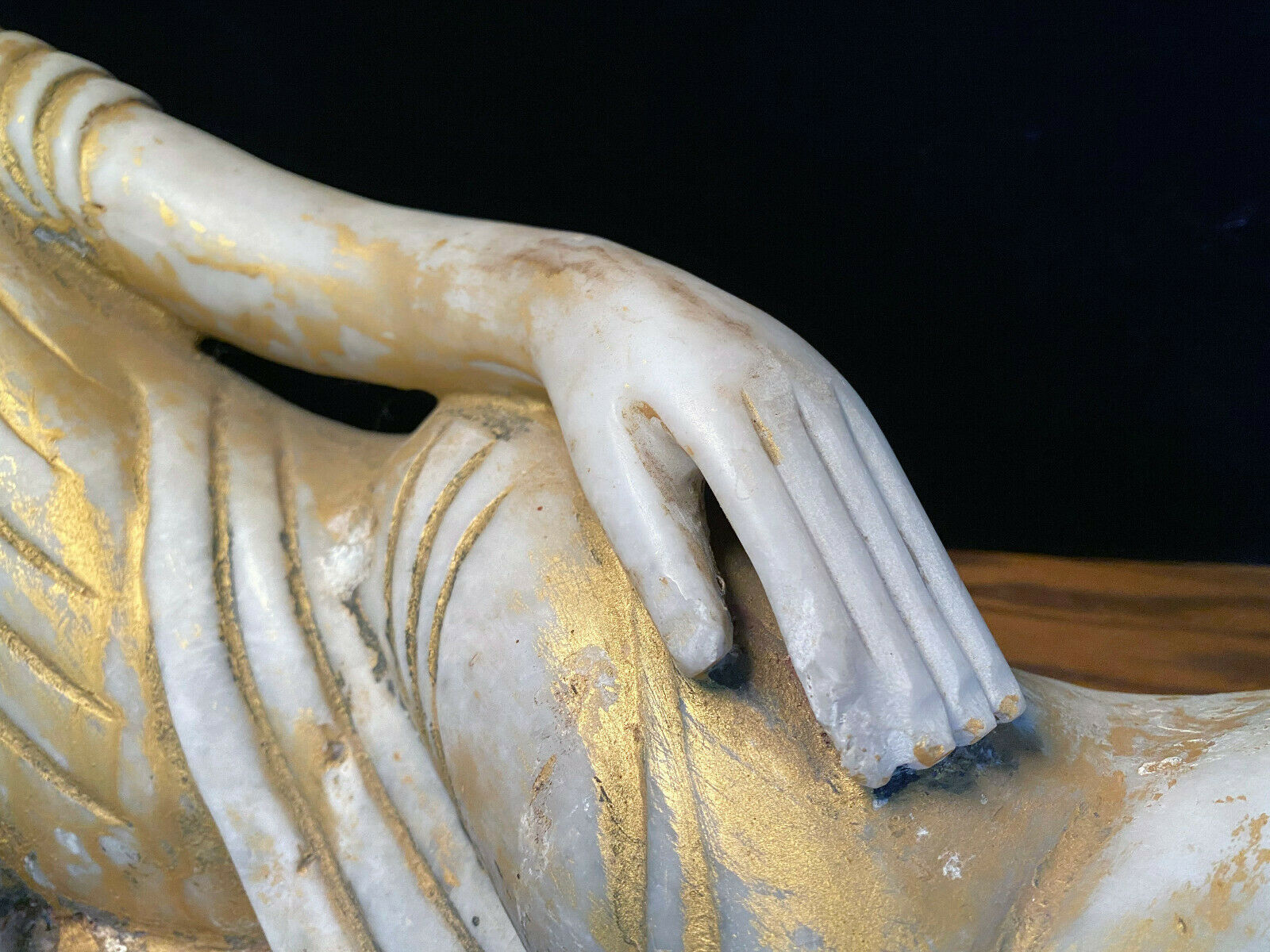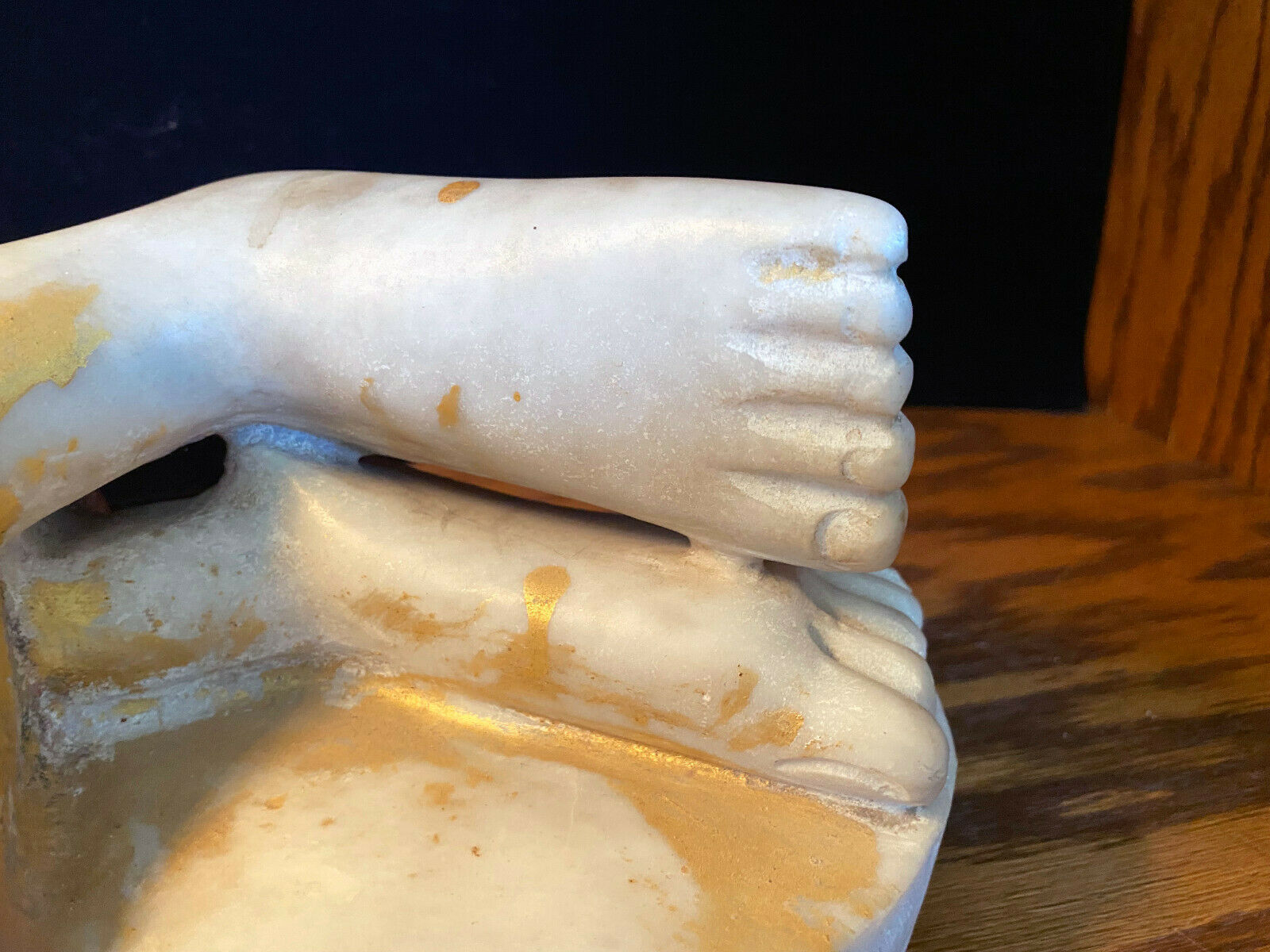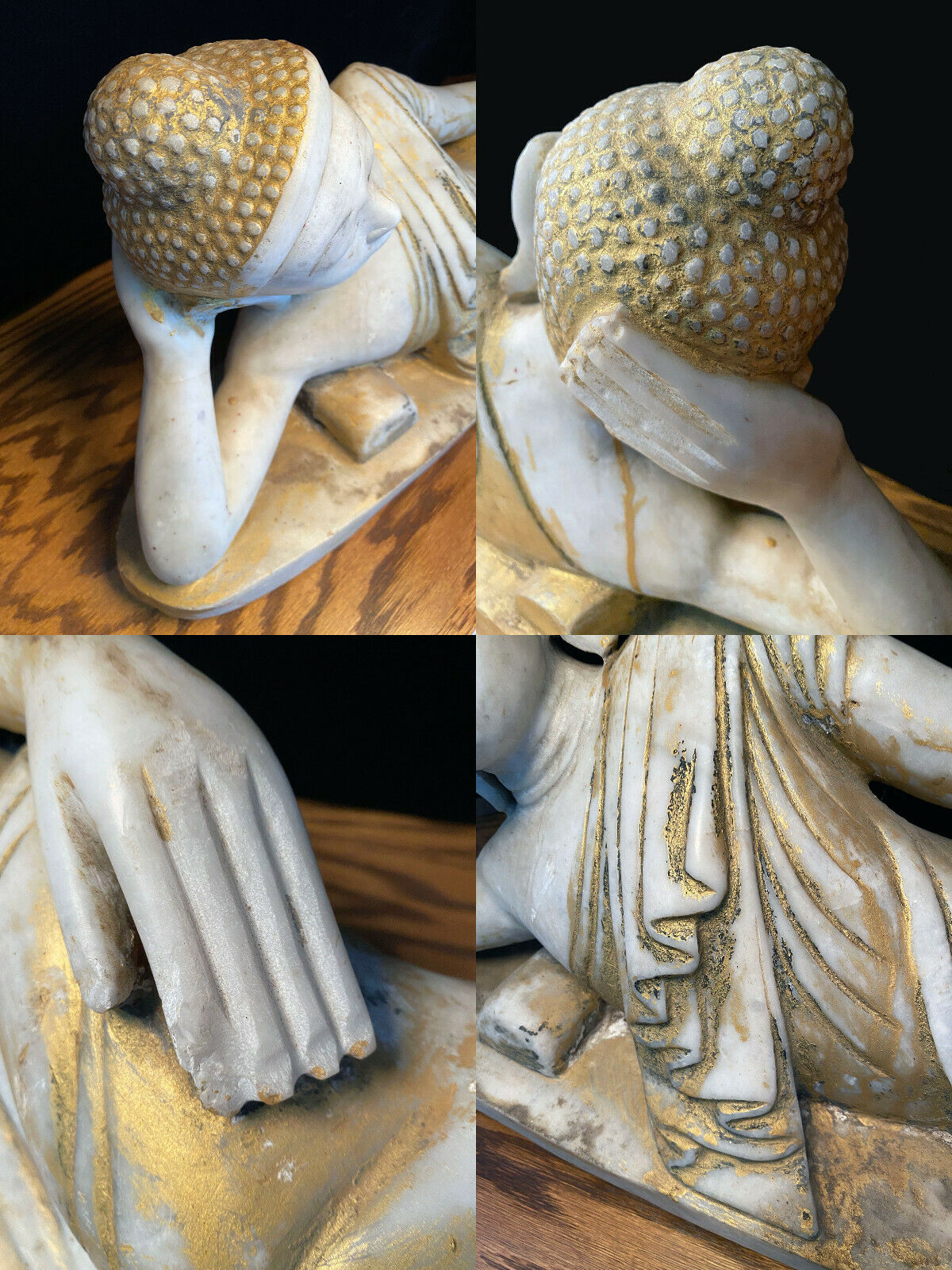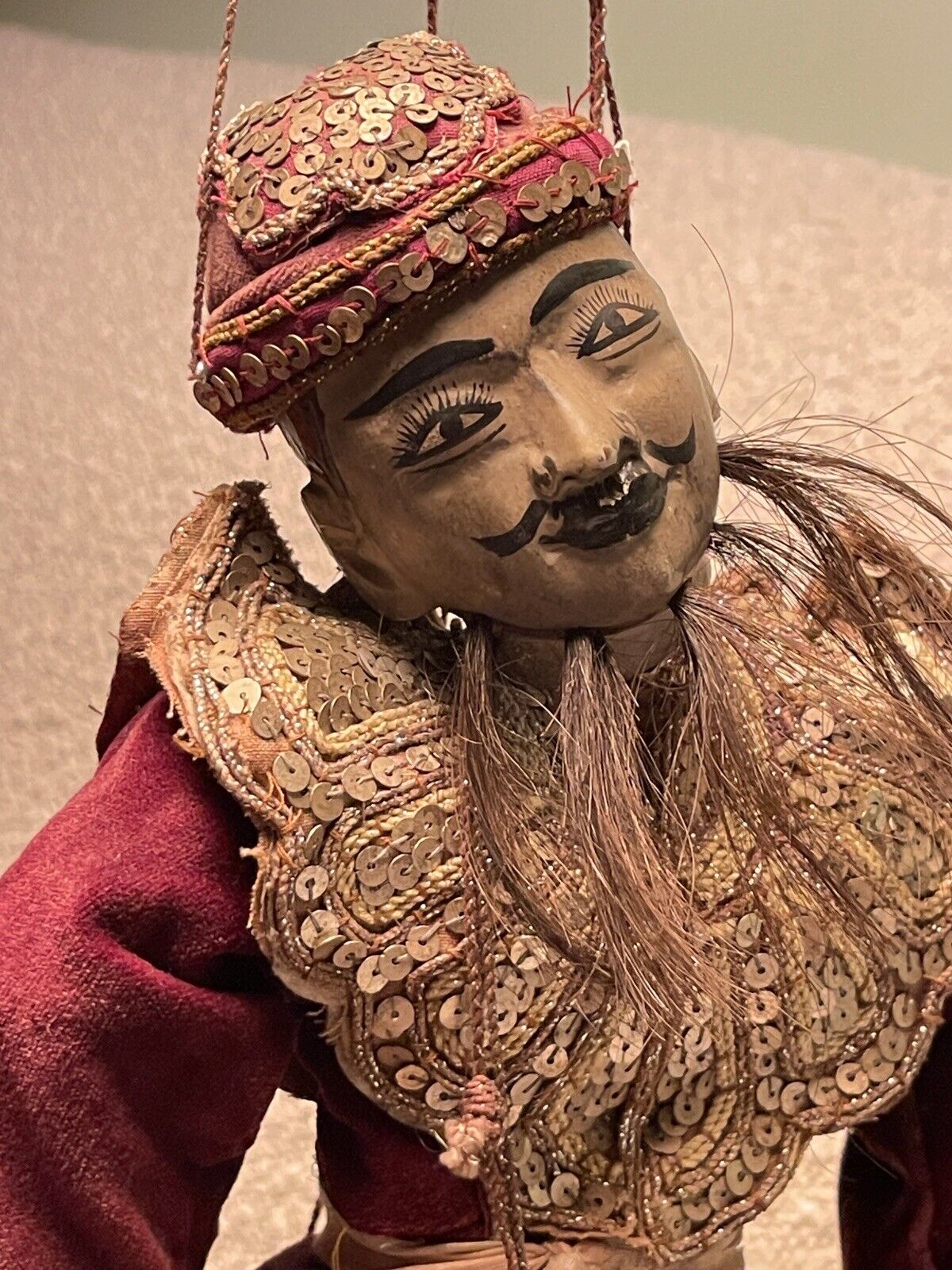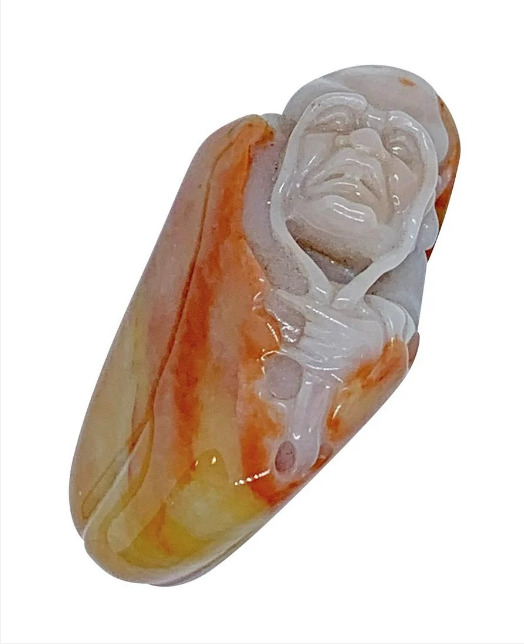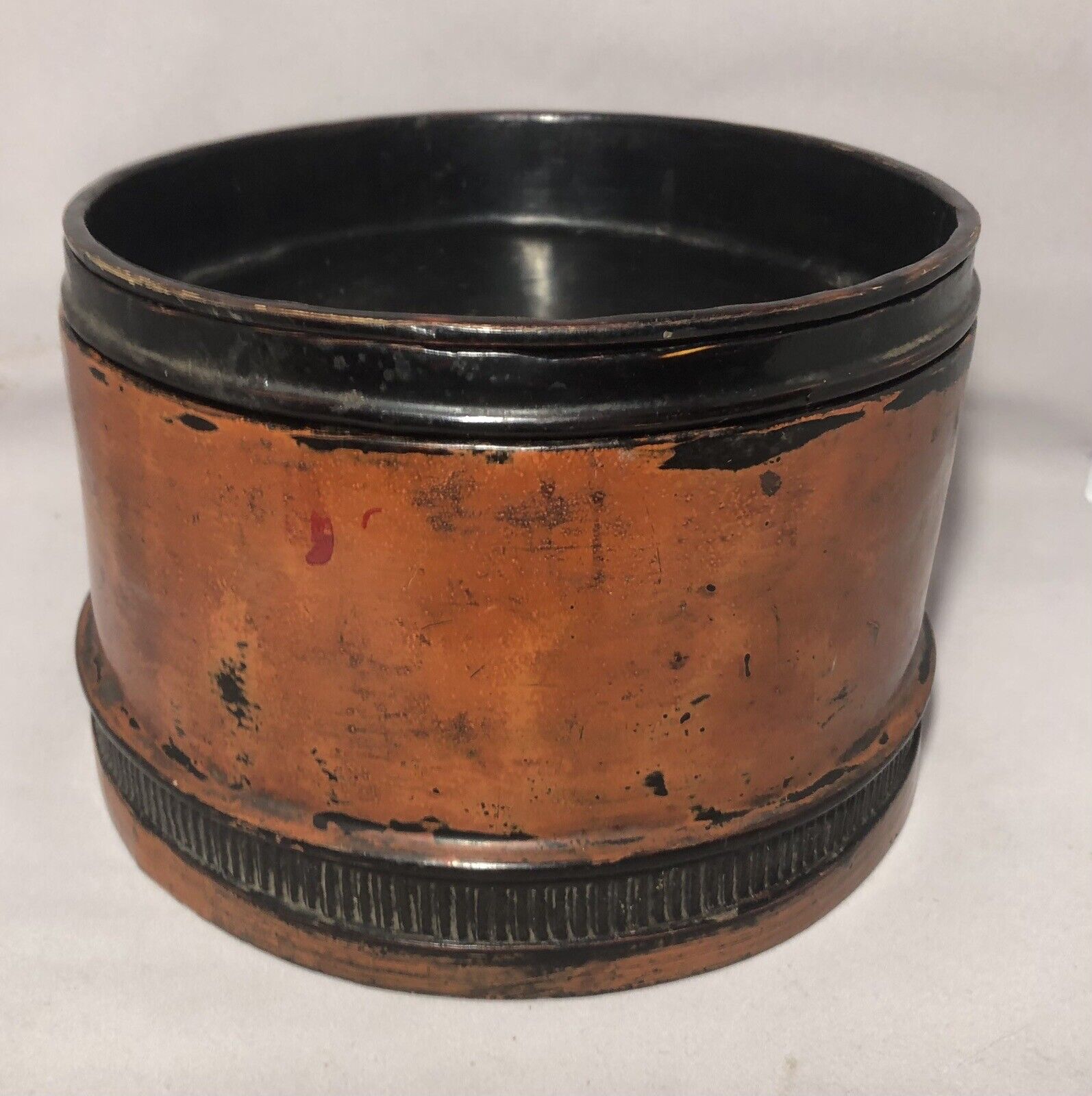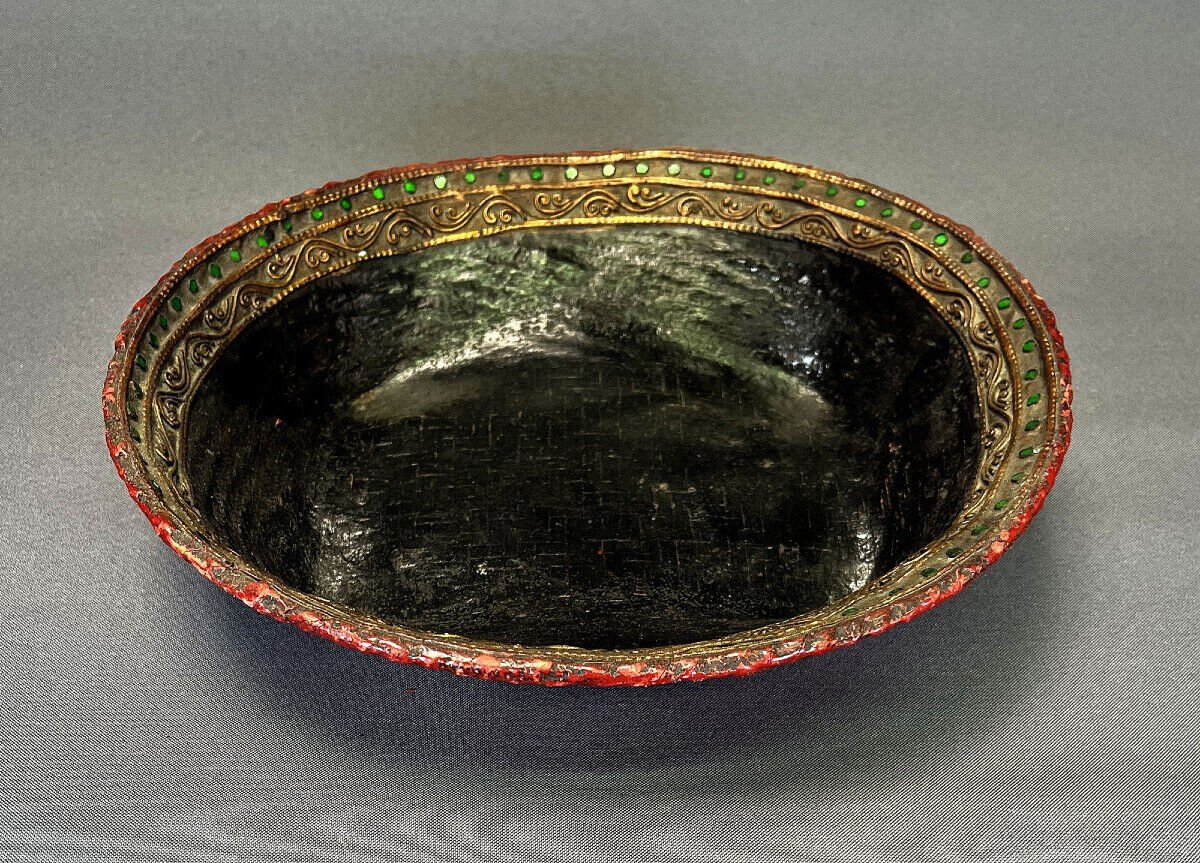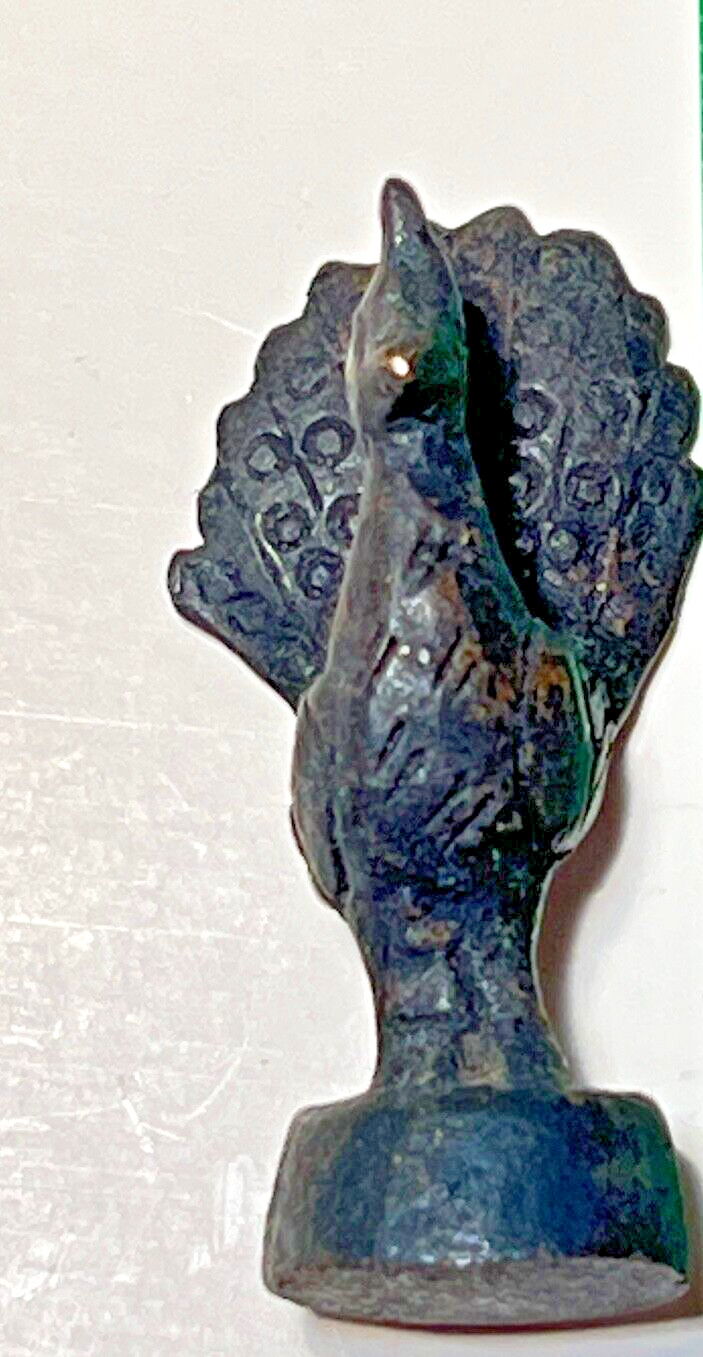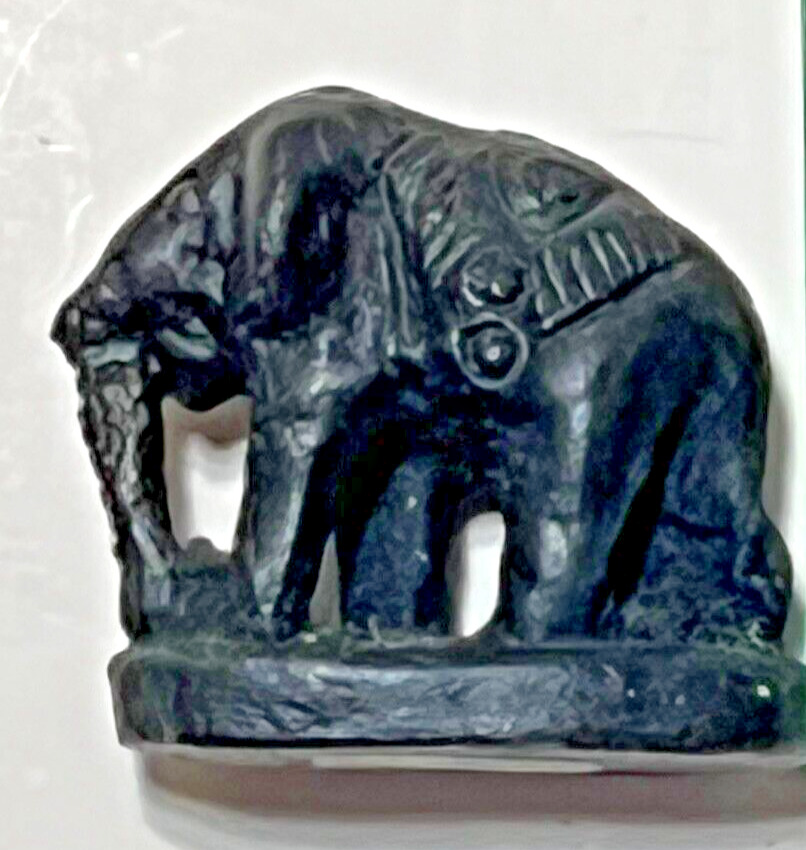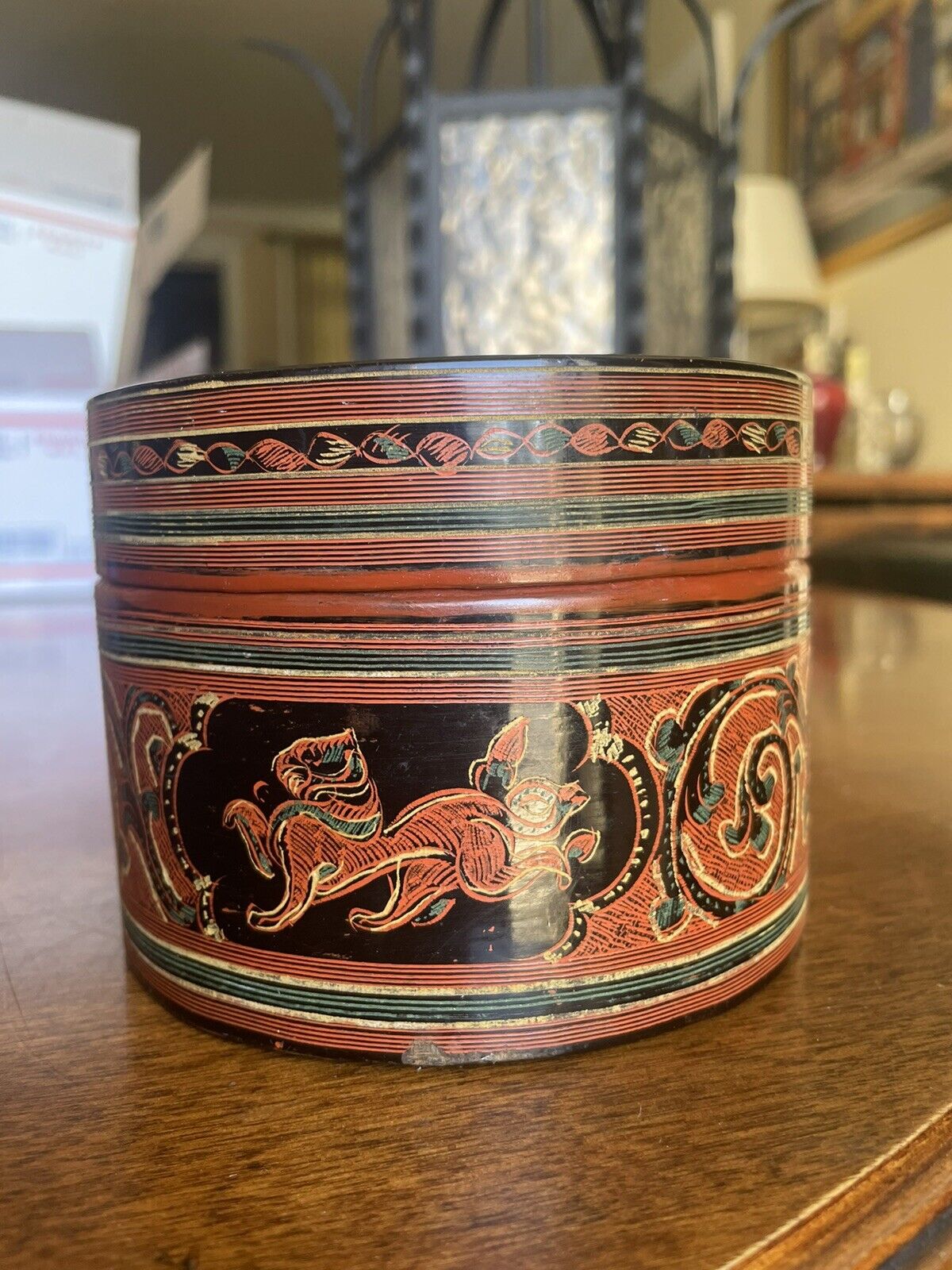-40%
Rare 19TH C. Antique Burmese Alabaster Gilded Parinirvana Reclining Buddha 32"
$ 1557.6
- Description
- Size Guide
Description
Rare Myanmar (Burma), fine Buddhist monumental white alabaster stone reclining temple Buddha, “Mandalay” style - mid to late 19th century. Measuring 32 Inches overall length.Dimensions: Length - 32 Inches Height - 12 inches Depth 9 Inches Weight: 77 Pounds
PLEASE REFER TO THE EXTENSIVE AND DETAILED PHOTOGRAPHS IN THIS LISTING FOR A COMPLETE AND ACCURATE DESCRIPTION AND KINDLY
ASK ALL QUESTIONS BEFORE BIDDING
.
We have a 100% Positive feedback record for over 15 years on Ebay. Bid with confidence as your satisfaction is very important to us.
Returns for items damaged in transit or defective items onl
y.
=================================================================================================================
The reclining effigy of the Buddha is posed in Parinirvana and carved from alabaster embellished with gilding. This very d
elicate sculpture of the reclining Buddha, one arm resting on his side, the other supporting the head slightly bent on one side, his face with a serene smile and the eyes half cast in meditation, his sanghati robes softly draped is a profound image of serene acceptance and repose.
This image of the reclining Buddha emanates a sense of cultivation and grace. Its polished appearance and serenely relaxed body bespeaks of the Buddha’s exalted and transcendental existence. Propping the head with one hand, the Buddha rests facing forward with a tranquil expression, at the point of his final departure from his earthly existence. The features are well-defined – arched eyebrows, narrow eyes, long nose, delicate mouth and elongated earlobes. This reclining Buddha takes on a beautiful form, with soft curves and twists in the body arranged to convey the spiritual opulence and detachment of Buddha-hood.
The reclining Buddha is an iconographic representation of the Buddha lying down during the moment of his Mahaparinirvana. It is one of the popular iconographic patterns in Buddhism as they represent the historical Shakyamuni Buddha during his last moments of illness. The Buddha is seen lying on the right side while his head is supported by his right hand. This particular pattern of posture in the Buddha's life seems to have originated at the same time as the other symbols and images of the Buddha, most notably in the Greek influenced
Gandharan
period Buddhist arts and have been followed by many other regions in their Buddhist art to represent one of the pivotal moments of the Buddha's life. This particular position of the Buddha is better known as the
mahaparinirvanasana in Buddhism. Buddha is said to have known that his death was approaching while in this position, the Buddha asked his disciples to make a couch for him in a bush to make it easy for him to lie down. Although he had attained enlightenment and became the Buddha, as a human being, the Buddha had to leave his physical manifestation. This moment is believed to have taken place in
Kushinagara
in India when he was about eighty years old. Therefore this physical demise of the awakened world is termed as Mahaparinirvana, the state beyond Nirvana.
The reclining Buddha statues are not supposed to induce the state of sadness to the followers but rather the reclining Buddha should be taken as an object of encouragement that all beings have the potential to be awakened or enlightened and release themselves from the suffering which is characterized by the cycle of rebirth. The serene and smiling expression of the Buddha in reclining Buddha statue portray the compassion and calmness that comes with the enlightenment. There are many iconic reclining Buddha statues all over the Buddhist nations like
Chaukhtatgyi Paya
in Myanmar,
Dambulla
in Sri Lanka,
Wat Pho
in Thailand,
and many more. These reclining Buddhas are taken as the objects of great importance and reverence.
In Buddhism, the parinirvana is the final nirvana, traditionally understood to be within reach only upon the death of someone who attained complete enlightenment. It is the ultimate goal of Buddhist practice and implies a release from the cycle of deaths and rebirths as well as the dissolution of all mental aggregates (form, feeling, perception, mental fabrications and consciousness).The historical Buddha is believed to have died and reached parinirvana (or Maha Parinirvana) around 544 BC in the site of Kusinagar in India. Such event has been depicted copiously throughout East Asia and had a profound effect on the Hinayana Buddhist iconography of Thailand and Burma, where very large versions of the reclining Buddha are indeed to be found.
The Mandalay Period represents the last great cultural flourishing of Burmese art. The period was named after the city of Mandalay, which served as capital of Myanmar for a brief period (1860-1885 A.D.) during the reign of King Mindon. After the Anglo-Burmese Wars, northern Myanmar was shut off from the coastal areas that were controlled by the British. King Mindon founded the new capital at a sacred site at the foot of a large hill. The center of the city was designed in the perfect geometrical form of a Buddhist Mandala, giving the city its name. Although this short-lived kingdom finally fell to the British forces in 1886 A.D. during the Third Anglo-Burmese War, the Royal Guilds that created such remarkable works of art for the King remained in the city where they continued to produce sculptures in the Mandalay style.
